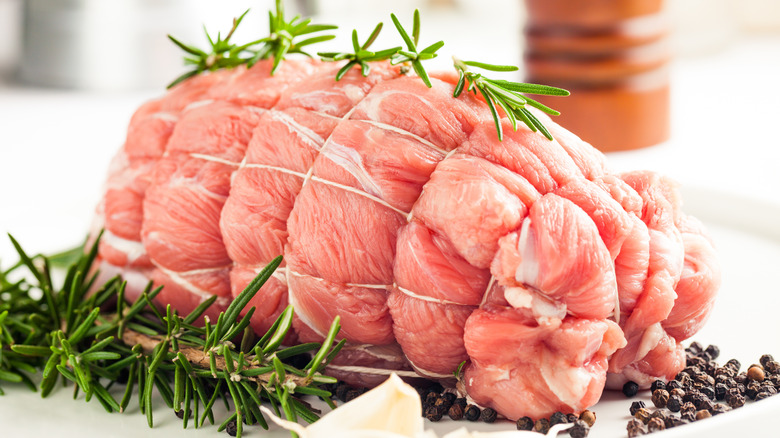The Biggest Roast Mistake You're Making
What is Thanksgiving or Christmas without some kind of roast? Even if you're used to eating one type of roast on special occasions, there are many other meats worthy of roasting that you may not have tried. There's prime rib, shoulder or leg of lamb, and loin or shoulder of pork, just to name a few. What's so special about roasts, anyway? According to The Spruce Eats, when one roasts meat that a low temperature for longer, it results in incredibly "flavorful, juicy, and tender" meat and helps it cook more evenly.
According to Masterclass, some of the best tips for a good roast include letting the meat come to room temperature before cooking, making sure your oven temperature is correct by calibrating with a thermometer, and using new pots and utensils to up your game. It's also important to stay conscious of how different cuts require different cook times. However, there is perhaps a more important steps that many, including the Masterclass site, don't touch upon.
Grab some rope!
According to Food Network, many chefs overlook a critical step in roasting meat, especially for uneven cuts — tying it. They note that not only does tying the uneven meat keep it in shape and help it cook more evenly, it also ups your presentation game, improving the look of the dish. Another important step they note that some other sources do not is to make sure to pat the meat dry before you do anything else, as drying the meat keeps it from slipping around while you tie and season it.
In addition to Food Network's expertise, The Kitchn also holds a tutorial informing readers to use butcher's twine as the preferred material and steps on how to tie a roast, including securing the twine and creating a loop pattern until it is complete from end to end. So when you want to impress your guests at a holiday party or during your next dinner with friends, make sure you have some butcher's twine and paper towels handy in order to make your roast the best it can possibly be.

